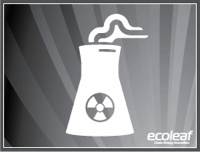ECOLEAF: Understanding Nuclear Power Plants


Plant efficiency and operational capacity are based on utilization. Major issues affecting utilization are unplanned outages, maintenance and refueling. On average, 21 plants a year must be serviced and are therefore non-operational for two weeks to a month. Scheduled service is to be performed outside the peak demand months of January, July, August, and December.
U.S. Nuclear Monthly Peaks and Lows
Jan 2006: 71.9 million MWh, 96.3% of capacity = 21.9% of all electricity generation
Dec 2006: 70.5 million MWh, 94.4% of capacity, 17.6% of all electricity generation
July 2006: 72.2 million MWh, 96.7% of capacity, 17.6% of all electricity generation
Aug 2006: 72.0 million MWh, 96.5% of capacity, 17.7% of all electricity generation
April 2006: 57.6 million MWh, 79.7% of capacity, 19.3% of all electricity generation
Oct 2006: 57.5 million MWh, 77.0% of capacity, 17.9% of all electricity generation
There are several issues affecting the viability of nuclear power plants. First, there is the issue of safe disposition and storage of nuclear waste. (The government plans to begin accepting spent fuel in Yucca Mountain, Nevada, in 2017.) Secondly, in 2001, the International Atomic Agency predicted that the amount of raw uranium needed to power the plants could fail to meet the demand by 2026. Thirdly, the construction of a new nuclear power plant can take up to 12 years and can cost 50% more than a coal-fired power plant. The Seabrook, N.H. facility (which became operational in 1990) cost $5 billion and has a capacity of 1244 MW or $4,020 per kW. Current cost estimates for building a new plant are now ranging between $6 billion to $12 billion (or $4,200 to 6,100 per kW of capacity). Fourth, the Atomic Energy Act of 1965 limits a plant’s lifetime operations to 40 years, although with testing and approval, a plant can get a service extension for another 20 years. By 2015, 40% of plants with existing capacities will expire; however, those applying for approval to the Nuclear Regulatory Commission have yet to be denied. Unless the government changes the Atomic Energy Act, in 2035, more than 47 plants--or 40% of our nuclear energy production--will become obsolete. This will mean 40,000 MW of lost capacity. Lastly, with the increasing age of nuclear facilities comes greater risk. Nuclear accidents have occurred, most notably the partial meltdown of Three Mile Island in Pennsylvania in 1979 and the explosion in Chernobyl in 1986.
Due to safety, storage, uranium depletion, operational limitations, and the ever-increasing capital costs to open new plants, nuclear power plant energy will potentially face extinction in the U.S. within the next 45 years.
US Nuclear Powered electricity consumption in 2005: 782 million MWh
US Nuclear Capacity Usage in 2006: 89.6% of 100,334 MW
SOMETHING TO CONSIDER: Across the globe, there were 439 operational nuclear power plants in 2007; these plants had a total capacity of 372 million MW. The lifetime of the average plant has been 23 years. However, there were 556 nuclear plants—that means that out of the original plants, 117 (or 21% of the total inventory) have been shut down after only having been in operation for an average of 22 years.
THE URANIUM REACTOR PROBLEM
The price of Uranium in early 2009 dropped to $40.50 per lb from $55 per lb at the end of 2008. On average it takes 500,000 lbs ($20 Million) of uranium cake to fuel one nuclear reactor power plant annually. There are 456 nuclear reactors around the world requiring $9.2 Billion dollars worth of uranium a year and by 2034 the availability of high quality uranium will drop off dramatically causing prices to rise and increases in CO2 nuclear reactor emissions.
Uranium Facts:
1.There are 50 uranium mines in 16 countries
2.Largest Producers of Uranium are Canada (28%), Australia (23%). Kazakhstan (10%), Russia (8%), & Namibia (8%).
3.Australia has 40% of the world’s uranium deposits
4.There are more than 7000 old uranium mines/site tailings requiring cleanup in Europe
5.In 2034, the grade of uranium ore sourced from the ground will fall dramatically resulting in a use of lower grade uranium
6.By 2070 nuclear CO2 emissions will equal the same as a gas-fired power station.
UNDERSTANDING NUCLEAR POWER PLANTS




Stay Informed
Get updates and action alerts.



back
next

Delivering Green Clarity in a Carbon-Troubled World™
Copyright © 2008 - 2010 by ECOLEAF™. All rights reserved.
Reproduction in whole or in part without permission is prohibited.
